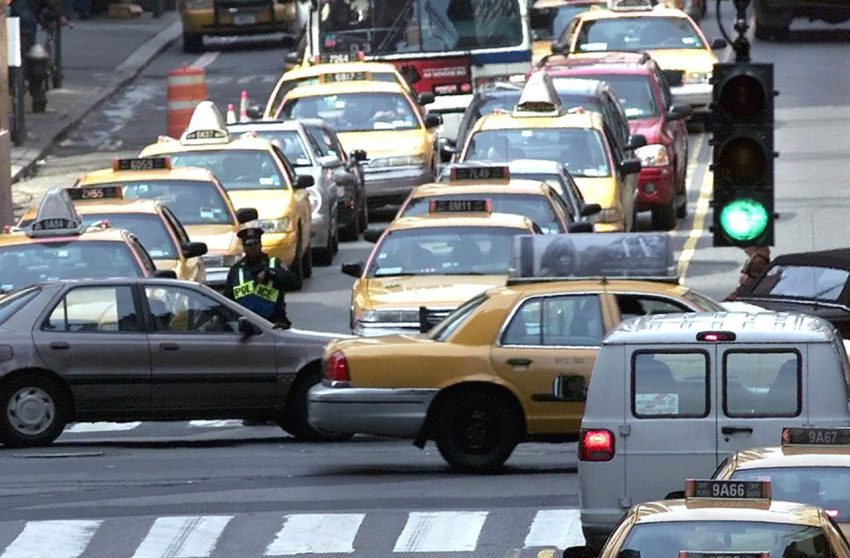There are four sorts of gridlock: natural, mechanical, human and foundation related.
How long is squandered on traffic? It’s the time spent hitting your brakes, as you can’t help thinking about why this spot on the turnpike generally comes to a sudden stop. It’s the time spent creeping forward, as you slither along the gridlocked street ahead. It’s the time spent sitting, as you frustratingly question how the gridlock even started.
What are the reasons for this peculiarity connected to pressure, worse hypertension and weight acquire? We investigate this article.
How independent driving will change our interstates and urban areas
What are GPS jammers and how would you battle them?
Sorts of clog
There are two generally speaking sorts of gridlock, as indicated by the Branch of Transportation: repeating and non-repeating. The Spot expresses that about portion of gridlock is the common kind, which happens day to day and is because of an absence of limit out and about — or at the end of the day, there are a bigger number of vehicles going at a given time than can in great shape. The other kind of blockage, non-repeating, is what the Dab calls “impermanent disturbances” in movement, like terrible climate or a vehicle crash.
Inside these two kinds of gridlock, we’ll check four additional particular classifications out:
Climate (non-repeating)
Mechanical (non-repeating)
Human (non-repeating)
Foundation (repeating)
Taken together, these reasons represent why city-occupants are probably going to see what ought to be a 30-minute drive transform into a 45-minute drive.
1. Climate
A concentrate by Dr. Jean Andrey and Daniel Unrau found that car accidents increment by around 50% during snow and downpour. From blustery or hazy climate, to the outrageous blizzard that leaves drivers speechless, weather conditions wildly affects traffic as well as street conditions too. Indeed, even a delicate downpour can have an effect on the off chance that all drivers delayed down together.
Something more serious, for example, an unexpected landslide couldn’t stop traffic however goal an impact on the off chance that a driver is in some unacceptable sloppy spot at some unacceptable sloppy time. This is an illustration of how weather conditions can affect traffic by causing awful circumstances, or by making currently terrible traffic circumstances far more atrocious.
All things considered, awful weather conditions is the principal guilty party in 15% of gridlock cases, as per the Speck.
2. Mechanical
Another element that can cause gridlock is the situation of a mechanical fizzling. While seemingly a mechanical coming up short could fall into a human-caused class, for example, in the event that the individual neglected to appropriately keep up with the vehicle’s tires, this isn’t generally the situation.
Mechanical downfalls can likewise occur because of outer factors like a sharp item out and about, and can happen out of nowhere while driving, regardless of whether you just had your vehicle kept up with.
While people can help forestall and diminish mechanical issues by assessing vehicles before each outing and ensuring preventive upkeep cycles are followed, one way or the other, these issues require the driver to get off the street. At the point when you’re on a five-path roadway, this undertaking can demonstrate troublesome. At the point when different drivers race to get around the halted vehicle, it just further hauls out the effect on traffic as drivers converge into encompassing paths as opposed to halting to allow the individual rapidly to get to the shoulder.
Once more, while in certain situations a driver might have had the option to forestall the issue, even probably the most prepared and dependable drivers can wind up in these circumstances.
3. Human
The all-too-normal reason for traffic is people. From diverted or tipsy heading to sluggish driving or close to home driving, there are numerous risky situations — even with our opposable thumbs and enormous cerebrums — that people trigger out and about. Simply investigating exactly 2016 traffic casualty measurements from the Public Parkway Traffic Wellbeing Organization gives a plain view at the confusion our choices can cause out and about:
There were 29 liquor weakened driving fatalities each day. This number has been consistently expanding throughout recent years.
In the traveler vehicle portion, 21% of drivers engaged with a lethal impact had a blood liquor content of .08 or higher.
Speeding-related mishaps represented 27% of fatalities.
The 2016 NHTSA report likewise viewed that as occupied driving and tired driving declined contrasted with 2015. While occupied driving probably won’t cause as numerous fatalities, it is a region where driver conduct can influence traffic consistently. Think about this — in an AAA Starting point for Traffic Wellbeing concentrate on the cerebrum’s mental burden during driving, it takes a normal of 27 seconds for the driver to turn out to be totally centered around driving once more.
Ghost Gridlocks: It’s obvious then that drivers wind up pursuing fast choices and participate in ways of behaving like last-minute slowing down. When a driver rams on the brake since the person in question was occupied, an expanding influence starts. Contingent upon other traffic conditions, this one error in slowing down could slow deal with that path and encompassing paths for a really long time. This’ alluded to as apparition gridlocks on the grounds that as drivers get past the languid spot, it will appear like literally nothing had caused the lull. Scientists portray it as a similar expanding influence that a bomb makes.
The far more detestable circumstance is the point at which that last-minute slowing down situation transforms into a minor collision. Once more, that time getting off the street causes considerably more remaining traffic, particularly while “snooping” is available.
However, truly a large part of the clog made by people is expected a lot easier explanation than any of those recorded above — driver preparing. Large numbers of our armada perusers who have gone through driver preparing programs probably concur. To get a permit, a driver should show a comprehension of the principles of the street, not really how to best proceed onto an expressway or utilize the gas pedal rather than last-minute slowing down to manage unpredictable traffic. Assuming all drivers went through the preparation and armada wellbeing instructing that many armada drivers do, it’s questionable that some gridlock could be forestalled.
4. Framework
Another class that could likewise ostensibly be human-caused is foundation. Nonetheless, while people made it, foundation is so immense and it’s general surroundings changing so quickly, that is all there is to it’s not really the shortcoming of designers who didn’t predict the requests which would be placed on streets at dramatic rates. From potholes that make lulls bottlenecks in regions that out-populated their streets, foundation is the secret savage that enhances traffic issues in numerous metropolitan and rural regions.
Bottlenecks alone record for 40% of gridlock causes, as per the Dab. Unexpectedly, in our endeavors to further develop framework, development likewise causes 10% of traffic.
Dealing with the causes
While natural variables are beyond our reach, innovation gives some expectation in settling the traffic difficulties. Independent vehicle innovation can possibly relieve human blunder, brilliant traffic lights can instinctively keep streets moving, and savvy traffic passageways could end that apparition traffic for the last time. Our circulatory strain could unquestionably utilize the break.




